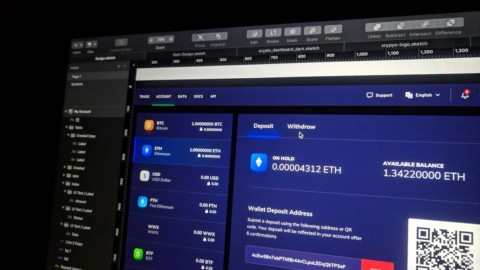The digitalisation of the supply chain is essential for efficient, transparent, and competitive logistics. The exchange of information between partners along the supply chain plays a central role. Whereas information used to be communicated verbally and deals sealed with a handshake, the exchange of data has changed significantly in recent years. Today, the focus is on automated, seamless processes, powered by technologies like Electronic Data Interchange (EDI), Radio Frequency Identification (RFID), and AutoID (see glossary of technical terms at bottom of article).
We sat down with Marcel Ducceschi, EDI Strategist at ecosio and an expert in the field of digital supply chains, to explore the key measures and challenges associated with digital transformation.
To what extent do you see EDI as an essential component of end-to-end responsibility in the supply chain?
EDI is a crucial component for automated, seamless, and uninterrupted information exchange among multiple partners along the supply chain. Due to the different IT solutions used by individual partners, the use of uniform, globally accepted standards (formats and protocols) is essential, as it ensures that data can be accurately understood and processed across diverse systems. Service providers like ecosio can provide significant support in converting various standardised formats and protocols.
What significant advantages do you see in the digitalisation of supply chain processes through technologies like EDI and RFID compared to traditional, paper-based methods?
Digitalising supply chain processes with technologies like EDI and RFID has three key benefits over traditional paper methods.
First, it greatly reduces lead times by allowing automatic and instant information sharing, which speeds up the synchronisation of goods and information.
Second, automation enhances process quality by minimising human errors and improving data accuracy, making processes more reliable.
Third, digitalisation lowers costs by reducing the need for manual work and creating more efficient workflows, which helps manage inventory (product stock) and labour costs (employee expenses).
These advantages make digitalisation essential for success in modern supply chains.
How do EDI, RFID, and barcodes work together in the supply chain?
EDI and EPCIS (Electronic Product Code Information Services) are methods for companies to share information. Barcodes and RFID help track products automatically.
It’s important to use these tools with standard numbers like GTINs (Global Trade Item Numbers), so everyone understands them. When companies combine EDI and EPCIS for sharing information with AutoID technologies, it ensures that product information matches what’s in stock. This connection is key for a smooth supply chain and helps automate tasks, making everything faster and more efficient.
How important is the synchronisation of information flows (e.g. through EDI) with physical material flows?
Only through continuous synchronisation between information flows and physical goods flows can the full benefits of the digitalisation of the supply chain be realised. Information, even when exchanged electronically, can lead to errors and additional costs if received too early or too late relative to the goods and recorded without synchronisation with the movement of goods.
What role do RFID and barcodes play in improving synchronisation, and where can we improve further?
AutoID technologies, like barcodes and RFID, are crucial for the automated identification of logistics items and tracking of goods movement. Without these technologies, keeping goods and information synchronised is either impossible or requires a lot of manual effort and time.
There’s significant potential for improvement, especially in automating the way we capture data using AutoID technologies. This includes better positioning of optical data carriers (like barcodes) and using RFID to capture multiple items at once, known as bulk capture. Modern 2D codes combined with advanced cameras or scanners represent an exciting advancement in this area.
Additionally, using new capture devices that leverage augmented reality (AR) technology, such as Microsoft HoloLens, can greatly enhance manual processes like picking by integrating AutoID technology with digital information.
How are new technologies like IoT, artificial intelligence (AI), and blockchain changing the digital supply chain in retail? Do you think there will be a shift away from EDI?
After 30 years of working with EDI, I believe there are valuable additions, like EPCIS, but I don’t see any real alternatives to EDI for exchanging information in the supply chain. While API (Application Programming Interface) solutions can complement EDI, they aren’t yet reliable or easy enough to replace it.
I think both IoT (Internet of Things) and artificial intelligence can greatly help with the digitalisation of the supply chain. However, I don’t see blockchain technology adding real value for sharing logistical information in the supply chain, especially compared to established technologies. In many cases, I feel like we have a blockchain solution, but we’re still trying to find a problem for it to solve.
How can an end-to-end EDI system tackle future challenges in the supply chain?
I believe that end-to-end information flows using EDI and EPCIS, which must align with physical goods movements, will be key to making supply chain processes faster, safer, more cost-effective, and more resilient. Emerging technologies like IoT and AI, along with established technologies such as RFID and 2D codes, will play an important role. The effectiveness of these technologies relies on their integration with modern software tools (like ERP and WMS systems) and the automation of distribution centres. For instance, a fully automated distribution centre, such as one based on SAP EWM (a SAP software solution for optimising warehouse management), cannot deliver real value without accurate data and proper identification of the items being processed.
Which trends or technologies do you think will most influence the development of EDI in retail?
Technologies like EDI, RFID, and AutoID are crucial for information exchange and synchronising flows. While EDI remains central, complementary technologies such as APIs and blockchain will enhance its capabilities. Their integration is essential for developing a more agile and resilient logistics system.
Want more advice on how to optimise your supply chain?
At ecosio are experts when it comes to improving your processes and reducing costs. Make an appointment with us today to discover customised solutions for your company!
Technical terms used in this interview
Here is an overview of the technical terms used in the interview. You can find many more in our EDI glossary.
EDI (Electronic Data Interchange):
A standardized system for electronically exchanging business documents, such as purchase orders and invoices, between organizations. EDI eliminates the need for manual data entry, which reduces errors and speeds up document processing, ensuring smoother and faster transactions between supply chain partners.
RFID (Radio Frequency Identification):
A technology that uses radio waves to automatically identify and track tags attached to goods, enabling real-time visibility of inventory. RFID helps improve inventory management by making it possible to locate, monitor, and update stock levels quickly and accurately, which enhances transparency and efficiency throughout the supply chain.
AutoID (Automatic Identification):
A broad category of technologies, including RFID and barcodes, that enable the automatic identification and data capture of items. AutoID provides fast and reliable product identification, ensuring the continuous flow of synchronized goods and information, which supports seamless inventory management and logistics processes.
GTIN (Global Trade Item Number):
The GTIN is a globally unique product number that identifies each product and facilitates international trade. GTINs are typically displayed as barcodes on packaging and enable the automatic identification and management of items across the supply chain, ensuring error-free and efficient product tracking and traceability.
EPCIS (Electronic Product Code Information Services):
EPCIS is a standard that allows for the sharing of data about the movement and status of products in the supply chain. It provides a framework for capturing and sharing information regarding the physical movement of goods, enabling better visibility and traceability of products. EPCIS helps organizations leverage data from RFID and other identification technologies to improve operations and enhance supply chain management.
SAP EWM (Extended Warehouse Management)
SAP EWM is a software solution that optimizes warehouse operations by providing tools for efficient inventory management, tracking of goods movements, and integration with supply chain processes, leading to improved efficiency and visibility within logistics operations.






















